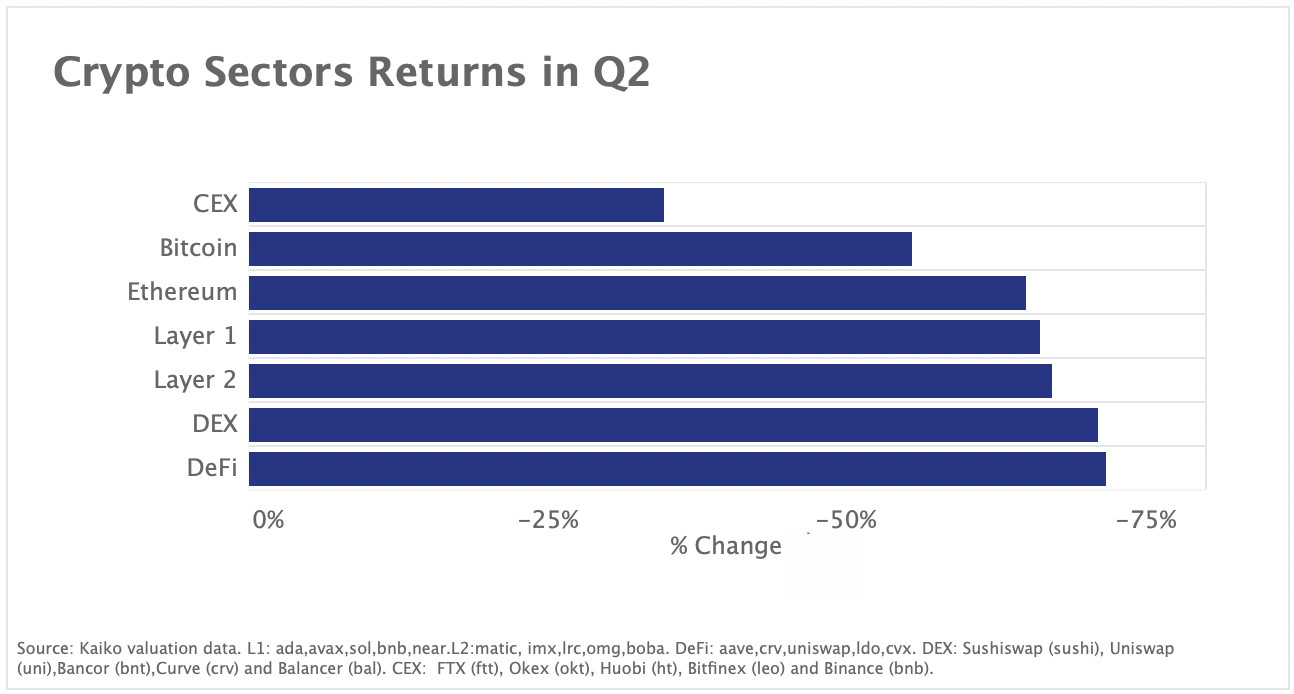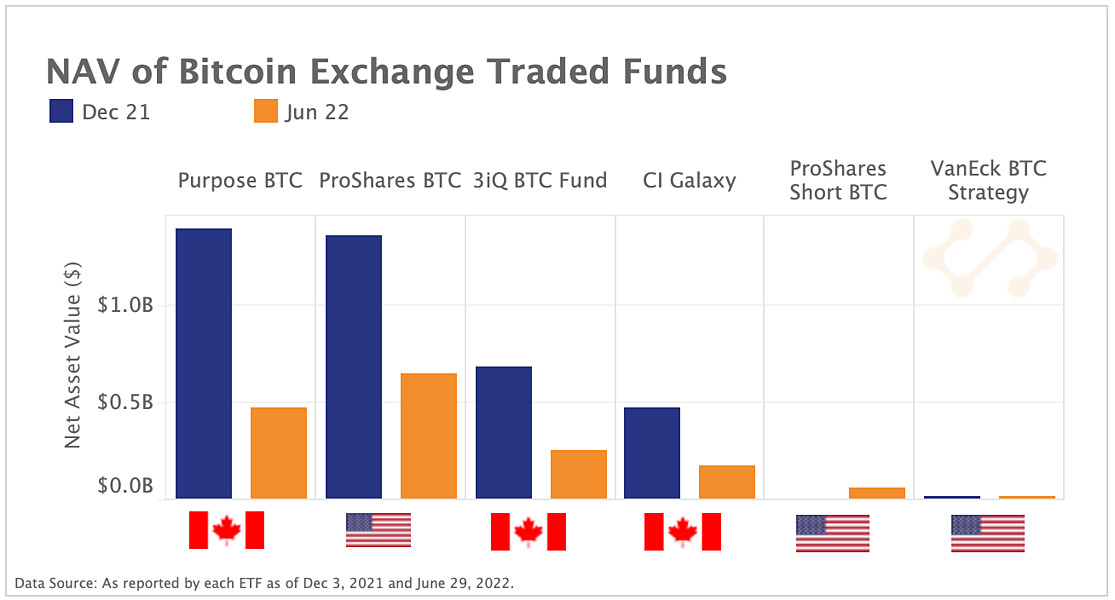A summarizing review of what has been happening at the crypto markets of the past week. A look at trending sectors, liquidity, volatility, spreads and more. The weekly report in cooperation with market data provider Kaiko.
The last 7 days in cryptocurrency markets:
- Price Movements: BTC dipped below $20k while ETH held steady above $1k as credit contagion continued to roil markets.
- Order Book Liquidity: Binance.US processed a record number of transactions after eliminating BTC trading fees.
- Derivatives: The ratio of inverse to linear perpetual futures has plummeted.
- Macro Trends: GBTC shares widen to record discount following ETF rejection.
BTC Drops Below $20k as Credit Contagion Spreads

Last week saw the close of Q2, a quarter which was one of the most volatile in crypto's recent history. The industry experienced its own version of a credit crisis as contagion spread across the ecosystem. Over the past week, Voyager Digital and Vauld were the latest lenders to suspend services, Three Arrows Capital filed for bankruptcy and FTX entered into a takeover deal with BlockFi that could be worth up to $240m. Meanwhile, the SEC rejected Grayscale's attempt to convert its Bitcoin Trust into a spot ETF, resulting in the GBTC discount widening to all time highs. Bitcoin closed the month under the key support level of $20k as selling pressure mounted amid a record unwinding of leverage.
DeFi tokens are the worst performers in Q2d
Despite crypto markets broadly registering one of the most bearish quarters ever, not all sectors have suffered equally. We compare the market performance of five simulated portfolios and observe that DeFi tokens have been the worst performers following the collapse of Terra. Since the start of Q2, the sector has experienced a sharp drop in total value locked. Sector-wise, centralised exchanges have performed better than Bitcoin (BTC) and Ethereum (ETH), bolstered by strong moves by FTX to save distressed crypto companies.
MakerDAO considers US bond investment with DAI treasury
MakerDAO, the issuer of the decentralized stablecoin DAI, is voting on whether to allocate $500m of their treasury to invest in US Treasury bills and bonds. The governance vote is particularly interesting considering that DAI’s main differentiator from other large stablecoins is the protocol's decentralisation. Adding U.S. government-backed bonds to their treasury would effectively link the decentralized protocol to the centralized financial industry. The vote comes at a time where stability among stablecoins is being prioritized by both issuers and investors. Moving away from a model of a crypto-collateralized stablecoins towards a fiat-backed model is a quick way to ensure stability, but it arguably comes at a cost of decentralisation. As we’ve charted above, DAI has been one of the least volatile stablecoins in recent times, whereas the likes of Tether (USDT) is trading at a persistent discount since UST's collapse.
Binance.US processes a record number of trades after fee cut
The US affiliate of the largest crypto exchange Binance has processed a record number of over 230K trades in early July, exceeding its previous all-time high reached during the May 2021 selloff. The increase comes after the exchange introduced zero-fee trading for Bitcoin on June 22nd. Binance.US's market share of volumes compared with other U.S. exchanges has surged since the fee change from around 5% in early June to 21%.
Coinbase's market share appears to be most affected by the change, losing about 5% of BTC market share. Competition between crypto exchanges is heating up amid falling trade volumes, with Coinbase, Gemini, Bitso and Bybit already announcing layoffs to curb costs. Binance.US's move to cut fees will likely induce other exchanges to introduce their own incentive programs to attract the highly lucrative U.S. market.
GBTC discount widens following SEC’s ruling
Last week, the US securities watchdog (SEC) rejected Grayscale’s application to convert its Grayscale Bitcoin Trust’s (GBTC) into a physically backed ETF, citing potential fraud and manipulation in the underlying bitcoin market and the role of Tether’s USDT in the broader crypto ecosystem. GBTC’s share prices halved in June while trade volumes remained lacklustre, before spiking to an 18-month high on June 21st. Grayscale sued the SEC almost immediately following the decision. The conversion was expected to help reduce the so-called GBTC discount but once the decision to deny the application was announced, the discount widened even further to all time highs of 34%. The discount refers to the difference between GBTC’s share price and the price of its underlying bitcoin holdings as traded on cryptocurrency exchanges. SEC’s decision comes days after one of the largest investors in GBTC, crypto hedge fund 3 Arrows Capital, was ordered into liquidation.
Bitcoin-linked investment products see outflows
Bitcoin-linked ETFs have seen significant outflows over the past few months as investors continued de-risking their portfolio. Overall, Canadian spot-backed ETFs registered a larger decline in their net asset value (NAV) between December 2021 and June 2022 relative to futures-backed instruments. The Canadian Purpose Bitcoin ETF had its AUM decline the most, plummeting from over $1.3b to around $460m. Falling demand for GBTC coupled with bearish market conditions have benefited the newly launched ProShares Short Bitcoin ETF (BITI) which offers a way to gain short exposure to bitcoin via futures contracts. However, despite BITI becoming the second largest ETF on US markets just two weeks after its launch, it is still well behind its Canadian and U.S. counterparts in terms of assets under management.










